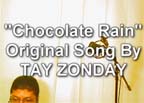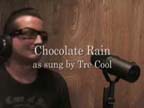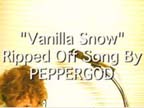| FOR IMMEDIATE RELEASE | Contact: Jim Ridolfo and Dànielle Nicole DeVoss | |
| PEER-REVIEWED WORK | Phone: 517-555-2400 | |
| January 15, 2009, 09:01 AM EST | E-mail: ridolfoj@msu.edu and devossda@msu.edu |
COMPOSING FOR RECOMPOSITION:
RHETORICAL VELOCITY AND DELIVERY
East Lansing, MI – Remix, appropriation, and composition. Sergio Polano and Pierpaolo Vetta (1993) argued, “true innovation is one that is rightly able to link the adaptive history embodied in any artifact with the changes of production tools whenever they occur” (p. 30). At the 2005 CCCC in San Francisco, Lawrence Lessig opened his featured talk by defining remix as “what we do when we mix together culture or knowledge, and then give others the opportunity to re-express that which we have mixed... culture is remix, knowledge is remix, politics is remix. Remix is how we as humans live and everyone within our society engages in this act of creativity.” Remixing—or the process of taking old pieces of text, images, sounds, and video and stitching them together to form a new product—is how individual writers and communities build common values; it is how composers achieve persuasive, creative, and parodic effects. Remix is perhaps the premier contemporary composing practice. To situate remix more appropriately and accurately, however, we need to leave behind what we think are the two dominant views of remix: 1) remix as simply cutting and pasting, and 2) remix as anchored and only related to music. We want to add another, less visible and less discussed aspect of remix here: that is, composing for remix, composing for recomposition.
A few months after his CCCC talk, speaking at Wikimania 2006, Lessig shifted his focus slightly to talk not just about remix culture, but of “rewrite culture.” And at Linuxworld 2006, Lessig again emphasized that “writing is how we remix culture.” At both venues, he spoke of the new technologies that have created “tools of creativity,” “tools of speech”—and, importantly, tools of rhetoric. Appropriately for this audience, he lauded the success of Wikipedia as an ideal democratic space in which users take culture, remix culture, rewrite culture, and thus make culture. He noted that the success—the growth and, we would argue, the velocity—of Wikipedia was not possible with 20th century technologies. The velocity of Wikipedia is impressive; within 24 hours of September 27, the number of English-written news articles in Wikinews topped 10,000. Now, less than 6 months later, that number is more than 11,500. More than 2.5 million articles are included in the English-language area of Wikipedia.
We start with this discussion of Lessig’s work because we think it speaks powerfully to the context in which writers currently compose. His arguments offer us much to wrestle with in the ways in which we approach remix and understand the potentials of digital meaning-making tools. Although Lessig comes to his work with a background in law, composition studies has certainly wrestled with remix for quite some time now. We might, for instance, identify patchwriting as remix; composition teachers have always encouraged students to remix their own work, copying, pasting, merging, and moving their own words and sentences as they reorganize and revise.
A new element, however, enters the mix when we situate remix in today’s digital culture; more elements and others’ elements become much more readily available to mix, mash, and merge. And, in fact, processes of mixing are valued across these spaces, where savvy mixers are recognized as their YouTube channels hit the top ten and as their videos are streamed across hundreds of servers. What is obvious here is that composing in the digital age is different than traditional practices of composing. Rhetorical practices in a digital age are different than traditionally conceived. Electronic copying-and-pasting, downloading, and networked filesharing change the dynamics of writing and, importantly, of delivery.
Siva Vaidhyanathan (2003) noted “that’s how creativity happens. Artists collaborate over space and time, even if they lived centuries and continents apart. Profound creativity requires maximum exposure to others’ works and liberal freedoms to reuse and reshape others’ material” (p. 186). Vaidhyanathan also argues that we need to focus not on An Author—with its romantic connotations and narrow, textual associations—but on producers, the “unromantic authors” (p. 10). When academics uphold distinctions between author and producer, we are left in an uncomplicated, often acontextual space that does not provide the tools we need to best negotiate the ways in which production and authorship become more slippery in digital spaces and within remix projects. Freedom from romantic authorship is crucial to rhetorical velocity, and the speed with which artifacts can move and be remixed across networks, audiences, and contexts. In fact, the romantic author figure stands in opposition to rhetorical velocity.
Lev Manovich (2002) created a telling picture of remix and velocity that links both directly to changes in delivery:
If a traditional twentieth century model of cultural communication described movement of information in one direction from a source to a receiver, now the reception point is just a temporary station on information’s path. If we compare information or media object with a train, then each receiver can be compared to a train station. Information arrives, gets remixed with other information, and then the new package travels to other destination where the process is repeated.
What Manovich is getting at here are the ways in which delivery happens in remix culture. Instead of a single author producing solitary work in isolation and that work being attributed to that single, solitary author and delivered in a one-way fashion, we have distributed, shared views of authorship—think of spaces like Wikipedia, for instance, where work and authorial agency is attributed often in diverse, diffuse ways.
In our day, writing often requires composers to draw upon multiple modes of meaning-making. Computers and robust networks allow writers to choreograph audio, video, other visual elements, text, and more. Writers engage in taking the old and making new. Appropriating words and images. Taking pieces, splicing ideas, compiling fragments. Transforming existing work. Transformation occurs when the rhetor delivers a text into a new context; collects the text with others to make a new compilation; adds additional materials to the text; and more (Mendelson, 2002; Porter & DeVoss, 2006). Most importantly here, transformation occurs as and when the composer remixes—see the "Chocolate Rain" original and remixes below.
| "Chocolate Rain" by Tay Zonday | "Chocolate Rain Sung by McGruff the Crime Dog" |
| "Chocolate Rain: The Music Video" | "Chocolate Rain" by Tre Cool |
| "Chocolate Rain" by Chad Vader | "Chocolate Rain" |
| "Vanilla Snow" by Peppergod | "Fast Food Chain" by snedge45 |
The "Chocolate Rain" original and remixes are interesting and at times innovative examples of remix. Likely, however, Tay Zonday did not write and produce his original piece with remix in mind. So what does it mean to take future composing and re-composition into strategic consideration while composing? That is, what does it mean to compose with re-composition in mind? This is a question key to this webtext, and one we return to later. Before turning to that question, however, we want to situate our work further in the history of delivery and in contemporary approaches to delivery in rhetoric and composition studies.
###







